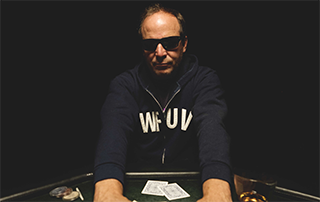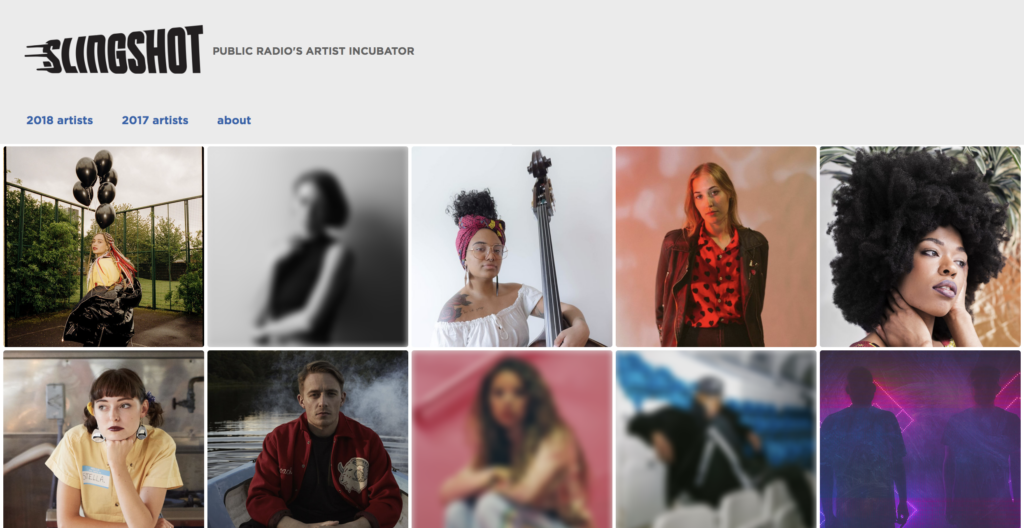Orginal story posted in: Maximum Alternative Magazine
Written by: Mike Parrish
Date: August 16,2018
In the last issue of Max Alt, our cover model, Mike Henry, gave us an inside look at the Music Discovery stations that he works with. We removed the “quotes” around Music Discovery this time around because it is very apparent that this growing group of stations is becoming a force in the developmental music ecosystem.
While we discussed the concept of this subdivision lodged between the Alt Union and Triple A format in the last issue, for Part 2 of the interview we will focus on how these stations have banded together, partnered with NPR Music and created two highly successful platforms – VuHaus and Slingshot – that offer unique content focused on the music discovery mission.
We pick back up on our conversation with Mike talking about how the VuHaus platform started…
Mike Henry: Vuhaus was started almost out of necessity. Public radio stations had invested in video technology probably a decade or so before commercial radio. Video was an early investment for public media. About five years ago, I heard a constant chorus from my clients that loved what they were doing in video, but weren’t sure where it was going. They would put videos on YouTube, but felt no one was seeing them, they were getting lost between cat videos and weren’t making any money on it. They were seriously questioning whether they were going to continue or not, so it felt like almost out of necessity that there needed to be a better idea. That’s when we proposed to initial stations that we aggregate our content, and those stations ended up founding VuHaus., We put all the station videos on one platform and push it out to the world without a public radio brand, even though public radio is behind the brand and that’s certainly where the content comes from when you go through and watch videos. It’s a great way for people to find out about public radio stations in their market that they may not even know existed, yet plays music they love.
MaxAlt: Who were the stations that helped launch VuHaus?
Mike Henry: The initial stations that bought in right away were KCRW/Los Angeles, WXPN/Philadelphia, KUTX/Austin, WFUV/New York, The Bridge in Kansas City and then KEXP/Seattle came on almost immediately. Those six became our beginning point and then we built up to 22 stations. We’ve done hundreds of live streams over the last three years. We’ve done thousands of live performance videos. We’ve become a known entity in the music discovery world.
MaxAlt: Why did you feel it was important for radio to continue to produce video content?
Mike Henry: One of the reasons we thought video was worth fighting for is that, even five years ago, research was showing video is the number one form of music discovery. So we use VuHaus like an icebreaker on the front of a glacier ship to pierce the digital market of people looking for new music. If someone searches for a newer artist, chances are they will find something from VuHaus that catches their interest. If the person hadn’t known about the public radio station that put the video up there, then during the process they are going to learn that public radio is an important source for music discovery. So VuHaus is a video penetration into the music discovery world that also exposes the partner public radio stations to more people.
MaxAlt: Are the videos searchable on YouTube or is it all housed and delivered from your own platform?
Mike Henry: Most of the time they are not on YouTube.
MaxAlt: That’s what I thought and why this was interesting because you aren’t giving away control of your content to a media giant and getting lost on their platform.
Mike Henry: Yeah, that is our premise. People say, “Why would you need this? We have YouTube.” Well, good luck finding it or finding one room on YouTube where you have all this music discovery. Whereas, if you go to the VuHaus website, you don’t have to sort through videos that have nothing to do with music discovery. It’s a human curated site. That’s an important point that we want to stand behind. There isn’t an algorithm. Our Program Director, Mark Abuzzahab, hand curates every video that goes up on VuHaus. And for every video that is posted, he links to other artists and videos, suggesting if a viewer likes this then they also may like these similar artists. Again, this is all hand curated and has no algorithm. The stations also curate their own pages. Each station has a city page that gives the local station an area within VuHaus that they can curate themselves. The way VuHaus works is they can pull from anything within VuHaus, so they don’t have to be limited to what they posted. If War On Drugs did a gig at KCRW, then chances are Bruce at WXPN is going to post it on their city page since the band is from Philadelphia.
MaxAlt: Is there a login needed? What is your traffic like?
Mike Henry: It’s a completely open platform. There is no gate. No charge. Our traffic is pretty good. We are very happy with where we are three years in. We have partnered with NPR Music and much of what we post on VuHaus is also posted on NPR Music. They get 40-50 million eyeballs a month, so our exposure has increased exponentially due to the partnership with NPR Music.
 MaxAlt: Talk about the partnership with NPR Music, which is where Slingshot comes in to play, correct?
MaxAlt: Talk about the partnership with NPR Music, which is where Slingshot comes in to play, correct?
Mike Henry: Yes, the NPR partnership is built around Slingshot, which can be found at npr.org/slingshot. It’s a baked in part of what NPR is about now. NPR just celebrated their tenth anniversary, and in the past, they had not had much direct engagement or involvement between local stations and NPR Music. Slingshot is the first project that puts the weight of NPR Music as a digital power up next to and partnered with the weight of 20+ radio stations from New York to L.A. and package it in a way that we can get behind emerging artists. So, collectively, we came up with the Slingshot brand.
MaxAlt: Slingshot is fairly new, but seems to have grown quite fast.
Mike Henry: We started in 2017 with 3 artists. We have added another 30+ in 2018. It covers everybody from indie rock darlings to singer/songwriters to urban artists. There is no genre filter on Slingshot. We don’t choose artists that will only work on the VuHaus partner stations. We break out of the mold and Slingshot is a complete artist discovery program that is intentionally broader than the radio stations that promote it. That allows us to have an incredibly wide range. When you go to the Slingshot page and look at the 2018 artists tab, the visual of that is striking, not to mention the majority of them are female. There’s a lot of talk these days about the amount of female artists. All I can say is, with only an editorial goal of finding the best new music out there, without any quotas or agenda, we are well over fifty percent female. It shows what happens when you take the filter off and just put your ears on.
MaxAlt: It seems like a natural fit for all involved… the radio stations, NPR Music, music fans and the artists themselves.
Mike Henry: Part of Slingshot’s agenda is to provide a curated filter for people who don’t have time to sift through music like we do. There are multiple benefactors with Slingshot. One benefactor are the music fans who want to find music at an early stage. To get into Slingshot, an artist can not have had a CD out before. These are truly emerging artists. It’s a huge benefit for an artist to get exposure on Slingshot. They are getting a big break early on in their career through exposure at npr.org/slingshot and the power of 22 radio stations around the country. The radio stations benefit from having their content posted on NPR’s website as well. And NPR wins by having this incredible reservoir of local content feeding into their website which they never had before. There are no losers in this equation.
MaxAlt: That’s a very powerful tool and message for the record and artist community to tap into.
Mike Henry: Slingshot was created to not only combine the power of NPR Music with local music discovery stations of public radio, but it was also done objectively to have a serious effort to show the music community – artists, labels, managers, promoters, etc. – that these public radio music discovery stations serve a vital purpose. It allows us to produce quantifiable results and case studies of what happens when the music discovery world of public radio gets behind a new artist. Lo Moon has already been on two late night shows since we broke them on Slingshot. Mt. Joy was on CBS Saturday morning. These are big deals and Slingshot was the bridge to make that happen. As we all compete for our spaces in the world, it’s important for public radio to be recognized for the role it plays in music discovery and development and be treated accordingly.
Read part 1 of the interview here.
Read the original story here.

Leave A Comment